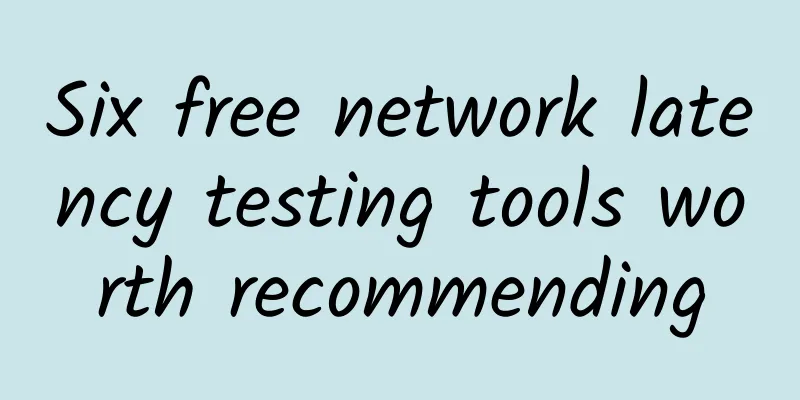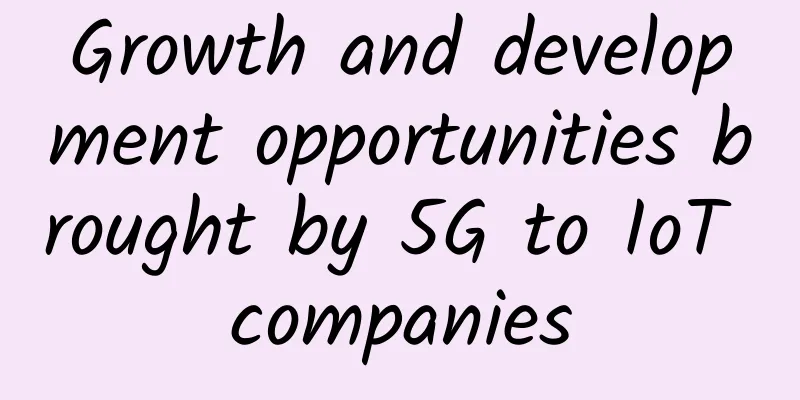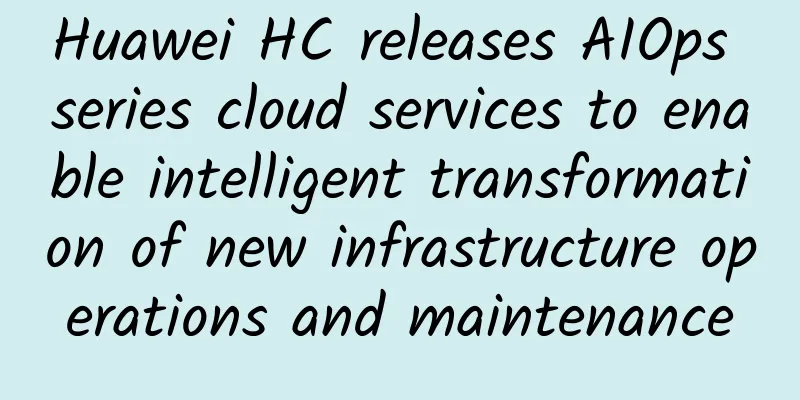Cisco's Scott Harrell: A new era of networking has arrived. Cisco empowers enterprises to innovate and transform

|
[51CTO.com original article] On the eve of the 2018 Lunar New Year, Cisco's senior executives came to China again. Perhaps because of his background in technology research and development, Scott Harrell, Cisco's global senior vice president and general manager of the enterprise network division, is always particularly sensitive to various technology applications. In just one week in China, he was amazed by the disruptive application experience brought by China's WeChat payment and red envelopes, and believed that this was the same as Cisco's pursuit, which was to sensitively capture the subtle changes in the global market and to help customers solve the new challenges and opportunities they face. Let the Internet empower the next generation of technological change
Scott said that Cisco has seen that all walks of life are undergoing profound changes, which has brought new challenges to the entire network environment. He classified the challenges into three categories: the first is the scale challenge. Taking the Internet of Things as an example, billions of smart terminal devices must now be securely connected through the network, which puts imaginable pressure on the network; the second is the complexity challenge. It is precisely because a large number of devices are connected to the Internet that the interconnected devices in the cloud have become more dense and complex; the third is the security challenge. The above two new challenges mean that people must use new methods to solve various security problems. After all, in the new era of the network, security has taken a dominant position and plays a key role. "In order to help customers face these challenges, Cisco launched the fully intelligent network in 2017." Scott explained that the fully intelligent network runs through all business units and all product lines of Cisco. It can truly bring automation, visualization and analysis to the network, so as to jointly solve various challenges faced by customers. "In the era of fully digital business, it will help customers respond to changes more flexibly, promote process automation, improve analytical performance, and enable the network to empower the next generation of technological changes." So how does Cisco achieve its fully intelligent network? Scott said that if you use a quadrant to represent the network environment of Cisco's customers, you can see that they are not at the most ideal quadrant level, but on the traditional coordinates. Just as low-latitude coordinates cannot respond to changes quickly, customers are obviously unable to fully cope with the challenges of the fully digital era. The fully intelligent network launched by Cisco can solve real problems for customers. For example, the deployment time required to change policies will be reduced, and the time to detect network problems, update infrastructure, and detect malware will be reduced. This is the benefit of automation and visual analysis that Cisco just mentioned. Whether in the field of branch offices, campuses, or data centers, Cisco is the only company in the world that can realize this vision. Cisco's strategy: a combination of three makes it invincible It has to be admitted that Cisco has a very clear and accurate judgment on the future development of the network and customer needs. For Cisco, customers can use Cisco's products, solutions, and services to deploy network environments more flexibly and quickly, thereby easily coping with network security challenges and smoothly entering the fully digital era. "How do we achieve Cisco's strategy? We need to closely combine intelligence-driven, best products, and integrated architecture." Scott pointed out that first of all, Cisco uses the best products, and each link is combined with the best products; at the same time, automation and visual analysis solutions are all driven by intelligence; finally, a perfect integrated architecture allows various software to coexist harmoniously. This combination allows customers to easily respond to and solve new network challenges. As the saying goes, "the combination of the three is invincible." Of course, these are not just three simple additions, but are the result of many innovations by Cisco engineers: the Catalyst 9000 series provides a new platform; the DNA Center brought by intent-based networking can help customers achieve real-time network monitoring and programmable network management at the management level, enabling customers to automate network management; Encrypted Traffic Analytics (ETA) takes security to an unprecedented level. Encrypted traffic analysis benefits 50,000 customers worldwide In Scott's introduction, he particularly emphasized Cisco's encrypted traffic analysis technology. Nowadays, a large amount of network traffic is encrypted, and many attackers take advantage of this to add Trojans and malware to encrypted traffic. 41% of attackers use encryption to evade detection. What's more serious is that this proportion is still growing, making new threats emerge in the network environment. The reporter learned that in order to expose all security threats in encrypted traffic, Cisco's world-class R&D team has organically combined network security intelligence and machine learning technology. Taking the newly released Catalyst 9000 series as an example, it can detect and discover potential threats in encrypted traffic without decrypting the traffic or destroying data privacy, truly solving the most difficult problems in the network and taking into account both security protection and privacy protection. "I am very pleased that Cisco has already benefited 50,000 customers around the world with this solution," Scott explained. Cisco has extended Encrypted Traffic Analysis technology from campus switching products to many of Cisco's enterprise-class routing platforms, including branch routers (ISR and ASR) and virtual cloud service routers (CSR). Through software upgrades, customers can easily deploy Encrypted Traffic Analysis technology, a new generation of detection technology." In 2018, more people will witness the value of the fully intelligent network. The results that Cisco's fully intelligent network brings to customers are also obvious. They can save a lot of time, greatly improve efficiency, and achieve unprecedented security. For example, using Cisco's fully intelligent network can save 67% of network configuration time and shorten the time to solve problems by 80%; on the other hand, while the impact of security vulnerabilities is reduced by 48%, operating expenses can be reduced by 61%. Cisco is not only helping enterprises move towards full digital transformation, but also helping enterprises move towards a new era of fully intelligent networks. These tools to help enterprises transform include innovative technologies and solutions such as the Catalyst 9000 series, DNA Center, and encrypted traffic analysis.
Compared with Scott's explanation from the perspective of Cisco's global market, Cisco's global vice president and chief technology officer for Greater China, Cao Tuqiang, focused more on the Chinese market. He told reporters that China's market size is very large, especially in the fully digital economy, which is very advanced in the world. When Cisco implemented the new network concept, it had a concept specifically for the Chinese market. For example, at the access layer in the Chinese market, China's existing market characteristics, network characteristics, especially the demand for the Internet of Things, determine that the network will carry a larger scale. Cisco hopes to provide the Chinese market with greater scalability at the access layer. On the other hand, Cisco's all-digital network architecture and network design are inclusive. This inclusiveness lies in the fact that the access layer can not only manage Cisco switches and access layer switches, but also accommodate switches from other vendors. At the same time, in terms of encrypted traffic analysis, Cisco hopes to provide some related special products in a targeted manner in the future based on the characteristics of the Chinese market and customer needs. "Today, the hot topics people are talking about have become virtual reality, artificial intelligence, driverless cars, 3D printing, etc. Therefore, Cisco's concept for the next-generation network at this time is just right, and China's partners and corporate customers have also responded very positively and affirmatively to Cisco." During the interview, the reporter also discovered a detail: although Scott was talking eloquently while explaining the PPT, his eyes hardly stayed on the PPT screen, and he didn't even turn on the computer he brought with him. This shows that he has a clear understanding of Cisco's development strategy and planning, and it can also be inferred that he is very well prepared for his visit to China. As the saying goes, "Plan first and then decide", I hope Cisco can accurately grasp the pulse of the development of the Chinese market and provide more help to companies in digital transformation. [51CTO original article, please indicate the original author and source as 51CTO.com when reprinting on partner sites] |
<<: China has been preparing for IPv6 for more than a decade, but why is IPv4 still the mainstream?
>>: Blockchain makes cities smarter and more innovative
Recommend
How will HTTP and DNS protocols evolve in the 5G era?
HTTP and DNS have almost become two household pro...
A brief history of computer networks
The development of computer networks has come a l...
How to set up a new router?
[[426343]] 1. Router startup initial sequence Whe...
Small router, do you really understand its structure?
There are four main types of routers in the netwo...
5G mobile phones have SA function enabled by default, and new consumer terminals are maturing rapidly
[[402070]] Since China Telecom announced in Novem...
Yang Xuqing of Softcom Wisdom: Leveraging the advantages of AI and working with Huawei Ascend to promote industry development
As one of Huawei Ascend's important ecologica...
Just look at these three pictures and you can understand the OTN layered structure
OTN (Optical Transport Network) is a hierarchical...
Huawei Mate X is a new species. You think foldable phones are simple!
In the mobile phone industry in 2019, foldable sc...
RAKsmart: Japan/Korea independent server replenishment, large bandwidth, unlimited traffic, CN2+BGP line
At the beginning of the month, I shared RAKsmart&...
Good news: Market forecasts 5G smartphone shipments to increase, but prices to continue to fall
Market research firm IDC expects the global smart...
Only 91 base stations were built in two years. Why is 5G millimeter wave so difficult?
[[405114]] This article is reprinted from the WeC...
5G development requires a long process
In terms of network construction scale, the numbe...
In the Internet Queen’s “Spring Festival Gala-style report”, what are the things worth spending five minutes paying attention to?
Internet Queen Mary Meeker's annual Internet ...
How to save records when surfing the Internet? You need to know the relationship between Session and Cookie
Why use Session and Cookie? In a nutshell, becaus...
A brief tutorial on the Dig command
Hello everyone, I am Xianyu. I don’t know how oft...









